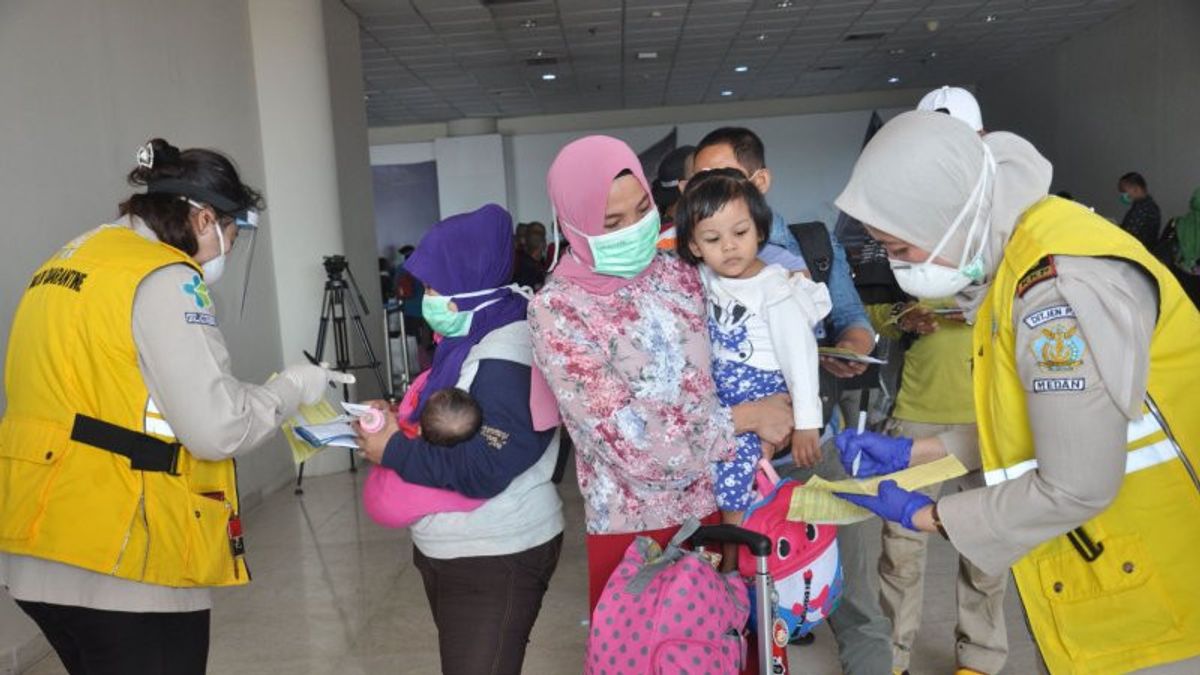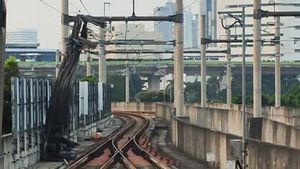JAKARTA - Lebaran homecoming is not only for people living in Indonesia. Indonesian Migrant Workers (PMI) are also returning to Indonesia this Eid.
"From January 1 to April 12, 2022, as many as 64,811 PMIs have returned to Indonesia, in good health and safe during the COVID-19 pandemic," said Head of the Indonesian Migrant Workers Protection Agency (BP2MI), Benny Rhamdani at a virtual press conference in Jakarta. related to PMI's return to Eid ahead of Eid, as quoted by Antara, Tuesday, April 26.
Benni said from that number, the return of PMIs was broken down into several clusters.
The Private to Private (P to P) scheme or private cooperation scheme dominates the total number of PMI returnees with a total of 59,917 people. Then, workers with the Government to Government (G to G) scheme or intergovernmental cooperation were again recorded as many as 2,845 people.

Furthermore, there are around 1,902 workers with individual schemes, and only 147 workers with the scheme for the benefit of the company itself (UKPS).
The PMI who seek sustenance in this country have a proud title, namely foreign exchange heroes through remittances or remittances. Foreign exchange donated by PMI is also quite large, which contributes 10 percent of the state budget.
Having lost its light due to the pandemic, PMI remittances are expected to grow again in line with the slowing down of the spread of COVID-19 cases. PMIs who return to work are the hope of their families.
The remittances sent by PMIs not only contribute to their personal lives, but also provide financial benefits for their families and the Indonesian economy.
Indonesia's Largest Foreign Exchange ContributorIn its 2017 survey, World Bank data recorded PMI's average monthly wage of US$281 or RP3.7 million. This is four times as compared to workers in Indonesia. This income is used by PMI to increase consumption and investment needs.
Indonesian Migrant Workers generally invest income sent to Indonesia or remittances in the form of houses, buying assets in the form of land or rice fields, or retirement and health savings. All are long term investments.
The World Bank also recorded that there was a decrease in poverty rates and an increase in the quality of life from the use of remittances by 28 percent. become a source that can sustain income and increase economic growth.
Globally, remittances reached 689 billion US dollars, an increase of 18.5 percent compared to 2015. A total of 76.78 percent or 529 billion US dollars of remittances went to developing countries. One of the largest remittance recipient countries is Indonesia, which accounts for almost one percent of GDP.

Data from Bank Indonesia 2019, PMI remittances reached 11.43 billion US dollars, or grew 37.03 percent compared to 2015 which was only 8.34 billion US dollars. This is what triggers PMI to become the largest foreign exchange earner in Indonesia.
In 2020, PMI remittances decreased by 17.56 percent, due to the global COVID-19 outbreak. Conditions that cause a number of countries to close access. Many PMIs were laid off and wages were in arrears because the world economy had slumped.
This year, remittances are expected to grow again, and in a positive direction as the spread of COVID-19 slows down and the number of people receiving vaccinations globally increases.
The Indonesian Migrant Workers Protection Agency (BP2MI) predicts that PMI will grow again and 500 thousand people will return to work when the economy starts to recover. Remittances have the opportunity to grow by 67.18 percent from the third quarter of 2021. This prospect will occur in stages according to the pandemic conditions and the economic conditions of the PMI recipient countries.
Increasing competitivenessUntil November 2021, according to BP2MI, PMI working in the informal sector was 77.6 percent or only 22.4 percent of PMI working in the formal sector. PMIs who work in the formal sector receive higher wages than those who work in the informal sector.
PMIs with low education tend to work in the Middle East and Malaysia. On the other hand, those with higher education tend to migrate to East Asia.
The average monthly wage for PMIs working in the Middle East domestic sector is US$189. This wage is half of the wages of PMIs working in East Asia such as Singapore, Hong Kong and Taiwan.
This low wage is because the average PMI does not have enough skills. Most PMIs are junior high school graduates, even lower. Some countries have minimum education requirements.

This indicates that wage gains are in line with the size of remittances sent. It also shows that the higher the level of education, the higher the economic benefits received by PMI.
Therefore, it is necessary to improve the quality and skills of Indonesian Migrant Workers, who are currently going home for Lebaran, so that they have better job opportunities. These skills can be improved through trainings in accordance with country standards that open PMI demand, so that they can compete globally and have better bargaining power.
The English, Chinese, Japanese, Arabic, and French versions are automatically generated by the AI. So there may still be inaccuracies in translating, please always see Indonesian as our main language. (system supported by DigitalSiber.id)









